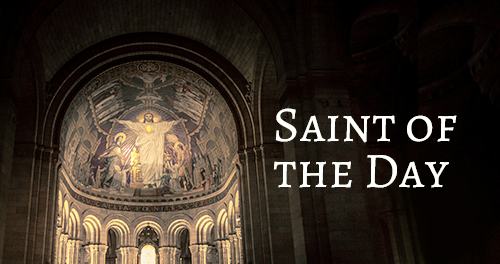
On September 2, the Church commemorates the “Martyrs of September”. To better understand these martyrs, it helps to better understand the French Revolution.
Though the American Revolution (1775-1783) preceded the French Revolution (1789-1799) by only a few years and though the two events are popularly assumed to be similar in their goals, the reality is far different. While Americans rebelled against the British crown for its refusal to treat them fairly as citizens, among other things, the genesis of the French Revolution was rooted in anti-Catholicism. Leading up to the outbreak of the French Revolution, many French thinkers and leaders openly rejected and mocked Christian faith and stirred up resentment against the French king and his government. It is not surprising that angry mobs eventually followed their lead and violently took control of the government. It is also not inconsequential that the Revolutionary government went so far as to make radical changes to the French calendar; the clear goal was to eradicate any Christian aspects of French culture, even including any references to the year of the birth of our Savior.
The Revolutionary government created a new civil constitution, which included a demand that all Catholic clergy swear their allegiance to France first and foremost, not the Catholic Church. The Vatican, of course, objected to this oath, and faithful Catholic bishops and priests refused to take it, leading to many arrests.
On the afternoon of September 2, 1792, in Paris, a violent mob of several hundred people, led by Revolutionary leaders, attacked four carriages carrying some Catholic clergy who had refused the oath, killing the priests with swords. The Revolutionary leaders then led the way to a nearby Carmelite monastery which was being used as a prison for 191 other Catholic clergy and vowed religious. Two of the more notable prisoners were Blesseds Francis-Joseph de la Rochefoucauld and Peter-Louis de la Rochefoucauld; the two men were brothers and also bishops. The archbishop of Arles, Blessed John-Marie du Lau d’Alleman, was the ranking ecclesiastic incarcerated with them.
When the mob entered the Carmelite monastery, they were carrying swords, pikes, and pistols. When the abbot (now Blessed) Hebert saw the mob approaching, clearly bent on executing some or all of the clergy, he asked for a trial; he was shot. The archbishop of Arles, Blessed John-Marie, fell to his knees in prayer, then rose and echoed the famous words of our Lord (John 18:4), “I am the man you are looking for.”
Although the archbishop and some men were killed outright, a pretense of a trial was set up for most of the other prisoners. None of them would accept the oath of allegiance to the Revolutionary government, and all of them were brutally killed. The executions took all night, and it’s said that the blood from the violence literally filled the gutters outside the building.
Since all 191 of these Catholic clergy and religious died for refusing to join a schismatic church, they are remembered today as martyrs and are all acclaimed as blesseds.
Martyrs of September, show me how to respond to violence with peace.